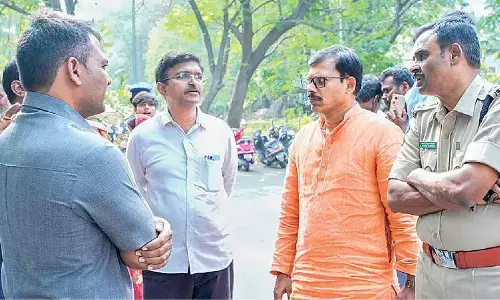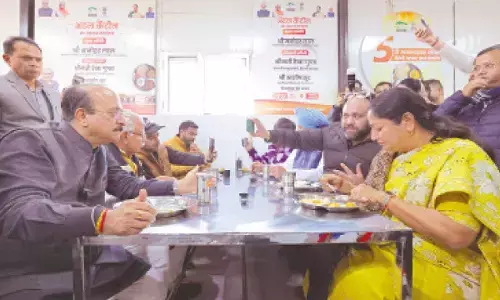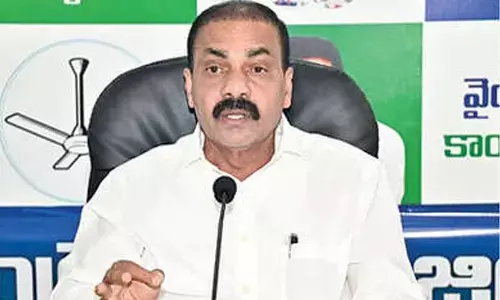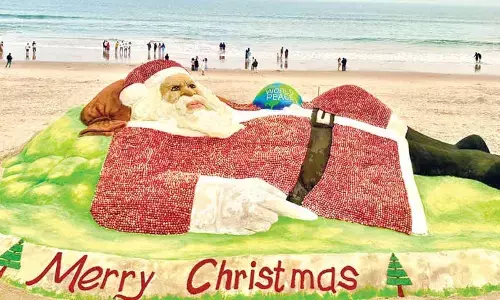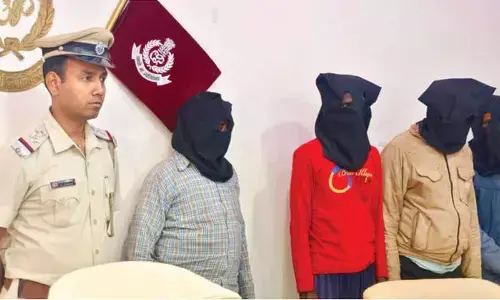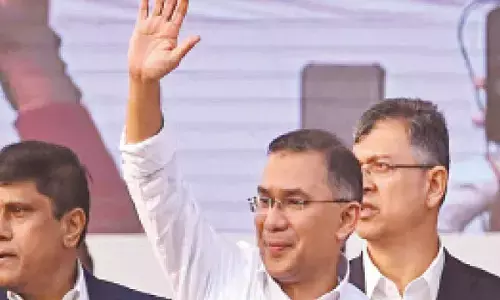MEGA Kaleshwaram Project: Conception to Construction
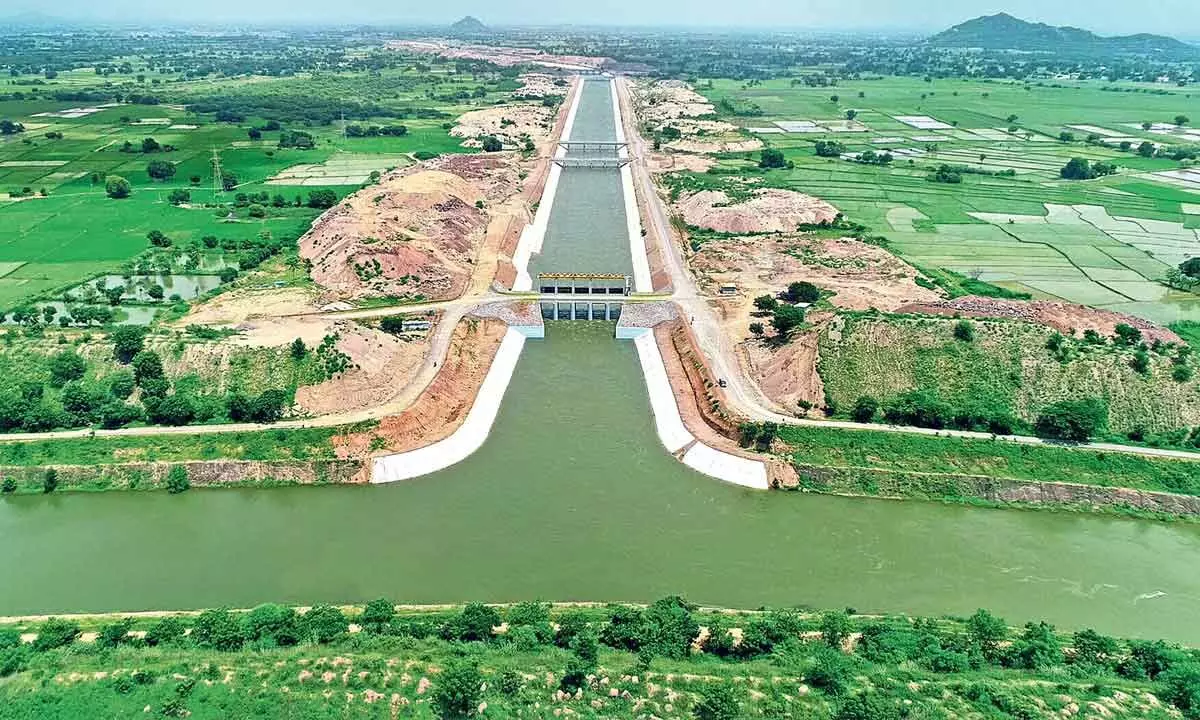
In an unforeseen development, when a small portion of Lakshmi (Medigadda) Barrage bridge of the world’s largest multistage multi-purpose Kaleshwaram Lift Irrigation Project (KLIP) in Telangana’s Jayashankar Bhupalapally district caved in, during the last week of October 2023, severe allegations of ‘Poor Quality of Works’ and ‘Design Flaws’ by some political leaders were flashed, for reasons best known to them.
In an unforeseen development, when a small portion of Lakshmi (Medigadda) Barrage bridge of the world’s largest multistage multi-purpose Kaleshwaram Lift Irrigation Project (KLIP) in Telangana’s Jayashankar Bhupalapally district caved in, during the last week of October 2023, severe allegations of ‘Poor Quality of Works’ and ‘Design Flaws’ by some political leaders were flashed, for reasons best known to them. The instant conclusion of the National Dam Safety Authority (NDSA) on the partial collapse was that the sinking of piers was caused by a combination of factors including planning, design, quality control, operation, and maintenance failures.
There were also repeated accusations during the recently concluded State assembly elections of indulging in high-level corruption in the project works. Some of them even demanded a CBI probe into the project. They castigated that KCR’s objective of redesigning Kaleshwaram Project was not to give water to the people, but to steal Rs 1 lakh crore public money and in the process using it as an ATM, by increasing its budget. According to them, initially, the project was worth Rs 38,000 crore, but was increased to Rs 1.2 lakh crore!
Against the backdrop of these allegations, a couple of things may clear the doubts of those who made them.
On March 20, 2015, at a significant review meeting chaired by Chief Minister K Chandrashekhar Rao, where I was present, KCR consciously revealed his mind in favour of redesigning and renaming the erstwhile ‘Pranahita-Chevella Project’ as ‘Kaleshwaram Lift Irrigation Project’ for optimum utilisation of River Godavari waters. At the same meeting, KCR suggested the place ‘Kaleshwaram’ where River Pranahita confluences with River Godavari, for the project and constructing barrage there instead of Tummuidihatti, with an intention to avoid any inter-State dispute with Maharashtra. Kaleshwara Mukteshwara Swamy Temple is a revered temple dedicated to the worship of Lord Shiva.
In fact, CM KCR’s decision followed his meeting with his Maharashtra counterpart in Mumbai a couple of days earlier to that, where it was in principle mutually agreed on changing the plan of the project. That was the genesis and conception of this Project, which is on record. The earlier designed ‘Pranahita-Chevella Sujala Sravanthi Project’ was an Interstate project involving Maharashtra which objected to construction of barrage at Tummuidihatti at FRL +152 m on the ground that a large extent of their territory will be submerged. Maharashtra repeatedly requested to lower the barrage FRL to +148.00 m, resulting in delaying project commencement.
CWC (Central Water Commission) assessed availability of 165.38 tmcft of water at 75% dependability at Tummuidihatti which includes 63 tmcft water unused by upper riparian states, which may not be available in future. The remaining quantum of water for all practical reasons would be insufficient for the project requirements. Later, CWC suggested to relook into the demand and supply aspects of the project with specific requirement of artificial reservoirs within and around the project area, either by increasing the capacity of existing reservoirs or creating additional new reservoirs. Accordingly, the project was re-engineered.
Kaleshwaram Lift Irrigation Project which now is familiar to the entire universe is a multiple entity, comprising construction of three barrages across River Godavari and constituent pump houses. The barrages are: Lakshmi (Medigadda), Saraswathi (Annaaram) and Parvathi (Sundilla) along with allied pumphouses for lifting water. The objective of this gigantic project is to bring new ayacut of 18,25,700 acres under irrigation covering 13 districts in the state, besides stabilising 18,82,970 acres of existing ayacut under Sri Ram Sagar Project (SRSP) two stages, Flood Flow Canal (FFC), Singur and Nizam Sagar Projects. CM KCR inaugurated Lakshmi (Medigadda) Barrage four years ago in September 2019. Telangana Governor, Maharashtra and AP CMs were present. I and my PRO colleagues were also present then.
The project also contemplated to provide 10 tmcft of drinking water to en route villages, 30 tmcft water to twin cities and 16 tmcft to industries. Land acquisition of about 98,700 acres and construction of reservoirs with a capacity of 147.71 tmcft was done. This huge project comprises 7 links and 28 packages. Utmost care was taken at every stage of construction. Based on the ‘Detailed Project Report’ (DPR) submitted to CWC, Government of India accorded requisite clearances in a record time of 18 months.
As per the DPR (2 tmcft per day), the approved project cost on June 6, 2018 by CWC was Rs 80,190 crore. As per the revised DPR, which is under appraisal with CWC, the cost of project including additional tmcft per day (3 tmcft per day) is Rs 1,21,764 crore. The reason for increase in the cost is ‘Additional One TMCFT of Water Per Day.’
The project is capital-intensive, requiring huge investments on various components. They included construction of barrages, canals, tunnels, pump houses, reservoirs, electro-mechanical and hydro-mechanical equipment, land acquisition, forest land permissions, resettlement and rehabilitation etc. Figures disclosed by the irrigation department reveal that the total expenditure incurred on works, substations, land acquisition, resettlement and rehabilitation, forest land acquisition, establishment and miscellaneous costs amounted to Rs 91,237 crore.
In order to meet the huge cost involved and expedite completion of the project to avoid cost escalations, and to meet expenditure from the state budgetary provision alone, the State government in October 2015 formed ‘Kaleshwaram Irrigation Project Corporation Limited’ (KIPCL) as a special purpose vehicle (SPV) to mobilise funds. KIPCL facilitated completion of head works and main trunk works of the project. There are seven links of the project, namely, three major barrages and three main pump houses in Link-I, works from Sripada Yellampally Project to Mid Manair Dam in Link-II and works from MMR to Kondapochamma Sagar in Link-IV. These were completed in a record time of 3 years. Works like distributary network system are in brisk progress.
To be more explicit, the completed works included 3 barrages, 10 pump houses with connected sub-stations and transmission lines, gravity canals, tunnels, 5 reservoirs such as Sri Komaravelli Mallanna Sagar (50 tmcft) and Kondapochamma Sagar (15 tmcft) etc. Works from Laxmi barrage (Medigadda) to Kondapochamma Sagar reservoir were completed. The water is impounded in Lakshmi Barrage, Saraswathi Barrage and Parvathi Barrage, Annapurna Reservoir, Sri Ranganayaka Sagar, Sri Komaravelli Mallanna Sagar and Kondapochamma Sagar etc. As a result, water was provided for irrigation during last three years to new ayacut and stabilization of existing ayacut. This resulted in increase of paddy crop yield from one lakh tonnes at the time of State formation to 3 lakh tonnes. Fish production also increased. Tremendous rise in ground water levels is another benefit.
Many irrigation projects in the country took more time for completion of them since laying foundation, when compared to Kaleshwaram, re-engineered, redesigned and renamed by CM KCR. Bhakra Nangal took 15 years (1948-1963), Sardar Patel 56 years (1961-2017), Indira Sagar 21 years (1984-2005), Heera Kud 10 years (1947-1957), Jaya Kwadi or Paithan 11 (1976-1987), Nagarjuna Sagar 12 years (1955-1967) and Sri Ramsagar 14 years (1964-1978). Whereas, Kaleshwaram took just 3 years (2016-2019), Bhakta Ramadas 11 months (2016-2017), and Thummilla 10 months (2017-2018).
Compared with the original estimate and sanctioned rates, the costs of cement, reinforcement steel, Steel plates, diesel rate, cost of land rate, labor wages, sand, earth excavation etc. were on the increase by about 192% on an average. As the Kaleshwaram Project was completed within timeframe, this increase in costs had a negligible effect on the overall cost. In addition, had mobilization of funds not been through off-budget borrowings, from national banks and government financial institutions at an interest rate of 8-9 %, no wonder, the cost of project would have been more than Rs 3 lakh crore, which is reduced by a tune of more than Rs 2 lakh crore. ‘Doubting Thomases’ need to appreciate this, instead of hurling false allegations.
(Writer is Chief Public Relations Officer to the Chief Minister, Telangana)










